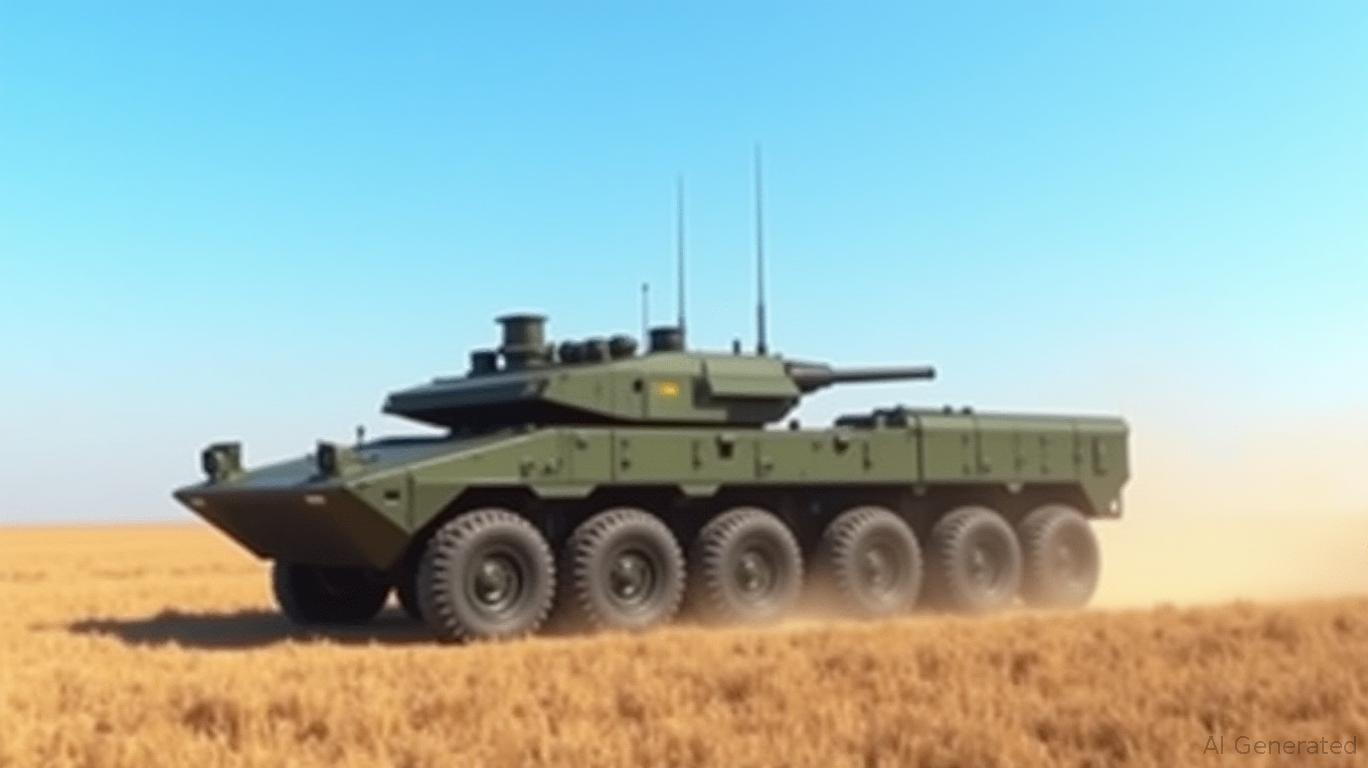Poland's Defense Pivot: Navigating the Shift to Drones, Armor, and Tech for Investors
Poland's abrupt cancellation of its $1.5 billion deal for 32 U.S.
helicopters in June 2025 marked a seismic shift in its defense strategy. The decision, framed as a strategic reallocation to address evolving geopolitical threats and modern warfare needs, signals a bold pivot toward emerging technologies like drones, armored vehicles, and advanced communication systems. For investors, this move opens doors to opportunities in firms aligned with Poland's new priorities while highlighting risks tied to traditional sectors.The Black Hawk Cancellation: A Strategic Reset
The scrapped helicopter deal, originally negotiated under Poland's previous government, was not merely a cost-saving measure. Instead, it reflected a deliberate shift toward systems better suited to counter Russia's hybrid warfare tactics and support NATO interoperability. As General Wieslaw Kukula of Poland's armed forces emphasized, priorities now include “versatile naval carrier helicopters, heavy transport, and combat training helicopters”—a reorientation that leaves Black Hawk manufacturers like Lockheed Martin (LMT) on the sidelines for now.

New Priorities: Drones, Armor, and Tech Take Center Stage
Poland's 2025 defense budget, projected to reach 4.7% of GDP—the highest among NATO members—will fuel growth in three key areas:
1. Drones and Loitering Munitions
Poland's procurement of 10,000 Warmate loitering munitions from domestic firm WB Group underscores its commitment to drone warfare. The Warmate system, capable of targeting armored vehicles and infantry with precision, is a game-changer for asymmetric conflicts. With a framework agreement spanning until 2035, WB Group is positioned to benefit from recurring contracts. Meanwhile, U.S. drone manufacturers like General Atomics (maker of the MQ-9 Reaper) could also gain traction if Poland expands its “Drone Legion” initiative.
2. Armored Vehicles: The Borsuk IFV and Industrial Sovereignty
The $1.7 billion contract for 111 Borsuk tracked infantry fighting vehicles (IFVs)—part of a broader 1,400-unit program—highlights Poland's push for self-reliance. Built by state-owned Huta Stalowa Wola (HSW), a subsidiary of defense giant PGZ, the Borsuk replaces obsolete Soviet-era equipment with NATO-standard capabilities. Investors should monitor PGZ (WSE: PGZ), which stands to gain from long-term production contracts and potential export deals.
3. Communication and Interoperability Systems
Poland's integration of drones like the Warmate with NATO-compatible systems such as the Topaz battle management system signals a need for advanced communication tech. U.S. firms like L3Harris (LHX) and Harris Corporation (now part of L3Harris) could benefit from contracts to upgrade Poland's command-and-control infrastructure.
Risks and Challenges
- Budgetary Trade-Offs: Redirecting funds from helicopters to drones and armor risks delays in other critical areas, such as air defense systems.
- Technological Dependence: While Poland seeks industrial sovereignty, key subsystems (e.g., engines, radars) may still rely on foreign suppliers like MTU Aero (Germany) or Raytheon (RTN).
- Geopolitical Volatility: Escalation in Ukraine or Russia's actions could accelerate spending, but uncertainty remains a wildcard.
Investment Opportunities and Picks
Investors should focus on three buckets:
1. Domestic Polish Contractors:
- WB Group: Leader in loitering munitions; contracts extend through 2035.
- PGZ/HSW: Beneficiary of Borsuk production and potential exports.
2. Western Defense Giants with Poland Ties:
- Lockheed Martin (LMT): Though sidelined on helicopters, retains influence via F-16 fighter co-production in Poland.
- Raytheon Technologies (RTN): Strength in air defense and communication systems aligns with Poland's needs.
3. ETFs for Broad Exposure:
- SPDR S&P Aerospace & Defense ETF (XAR): Tracks a basket of defense firms, including those with Poland contracts.
Conclusion: A Strategic Play for Growth
Poland's pivot toward drones, armor, and tech isn't just a reallocation—it's a blueprint for future-proofing its military. Investors should capitalize on this shift by targeting firms with proven contracts in these areas. While risks exist, the long-term demand for modernized NATO capabilities, coupled with Poland's record defense spending, positions this sector as a high-growth frontier. For the cautious, ETFs offer diversified exposure, while risk-tolerant investors might seek direct exposure to Polish equities. As Poland reshapes its defenses, the rewards for aligned investors could soar.
Investment Thesis: Bullish on WB Group and PGZ for their direct exposure to Poland's modernization; neutral on helicopter manufacturers until new contracts emerge.
Risk Alert: Monitor geopolitical tensions and budget execution for potential pitfalls.
Data sources: Polish Ministry of Defence, HSW, WB Group, and NATO procurement reports.

Comments
No comments yet